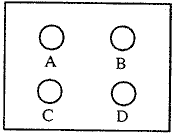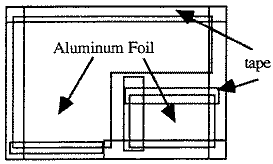|
4th Grade Performance Task
Contributed by: New York State Education Department (NYSED)
NYS Alternative Assessment in Science Project (1996)
Description:
Students will use an electric tester to determine where electricity
flows between circles on a mystery card, testing students' knowledge
of electrical conductors and circuits.
This task assesses students' abilities to observe, record and interpret
data, generalize and infer, and create a diagram.
This task is designed to take students approximately 5-8 minutes
to complete.
Overall Task Content Area:
- Physical Science
Specific Knowledge Areas:
- Light, heat, electricity, and magnetism
Performance Expectations:
- conducting investigations
- using equipment
- gathering, organizing, and representing data
- formulating conclusions from investigational data
- applying scientific principles to develop explanations
National Science Education Standards:
4 A SI 1: Abilities necessary to do scientific inquiry:
Grades K-4
1.3 Employ simple equipment and tools to gather data and
extend the senses. In early years, students develop simple skills,
such as how to observe, measure, cut, connect, switch, turn on and
off, pour, hold, tie, and hook. Beginning with simple instruments,
students can use rulers to measure the length, height, and depth
of objects and materials; thermometers to measure temperature; watches
to measure time; beam balances and spring scales to measure weight
and force; magnifiers to observe objects and organisms; and microscopes
to observe the finer details of plants, animals, rocks, and other
materials. Children also develop skills in the use of computers
and calculators for conducting investigations.
1.4 Use data to construct a reasonable explanation. This
aspect of the standard emphasizes the studentsí thinking as they
use data to formulate explanations. Even at the earliest grade levels,
students should learn what constitutes evidence and judge the merits
or strength of the data and information that will be used to make
explanations. After students propose an explanation, they will appeal
to the knowledge and evidence they obtained to support their explanations.
Students should check their explanations against scientific knowledge,
experiences, and observations of others.
4 B PS 3: Light, heat, electricity, and magnetism: Grades
K-4
3.3 Electricity in circuits can produce light, heat, sound,
and magnetic effects. Electrical circuits require a complete loop
through which an electrical current can pass.
(Use the "hot" link on the PALS
home page to check the full text of related National Science
Education Standards, if desired.)
National Council of Teachers of Mathematics:
AL3: Use mathematical models to represent and understand
quantitative relationships:
Grades pre K-5 b. model problem situations with objects and
use representations such as graphs, tables, and equations to draw
conclusions.
REP1: Create and use representations to organize, record,
and communicate mathematical ideas:
Grades pre K-5
General Instructions to the Teacher:
This task is designed to take most students 5-8 minutes to complete.
Students will be working individually for the experiment/activity
part of this exercise.
The materials should be set out at each lab station, if possible.
A central supply area, if needed, should be easily accessible. All
supplies should be clearly labeled.
Materials for "Mystery Card 1":
At each station students should have:
- 1 D-cell battery
- 1 battery holder
- 3 6" wires with alligator clips at each end
- 1 flashlight bulb
- 1 bulb holder
- 1 circuit board
Advance Preparation:
- The circuit card can be made by taping aluminum foil (heavy
duty) between two 4" x 6" or 5" x 8" index cards. You can use
old folders or poster board too. It is better to use colored index
cards rather than white because they are not as see through.
- Punch holes for the terminals and label on one of the index
cards. A standard size hole punch is large enough.
Index card #1
- Cut a piece of aluminum foil large enough to fit over the top
of the four terminals. Heavy duty aluminum foil works the best.
- Cut out the bottom corner of the aluminum foil so that terminal
"C" is not connected to the other terminals.
- Tape the foil securely to the back of the index card with holes
in it.
- It is important to put foil over all of the terminals because
it is visible in each of the holes.
- Be sure that you do not put tape over the top of the terminals
or the test card will not work properly.
Index card #2
- Tape the two index cards together on all four sides so that
it cannot be taken apart easily.

- Connect wires, bulb, and battery to form an electrical tester
(see diagram on student task sheet).
- Be sure that all of the electrical testers and mystery cards
are in good working condition before students begin the task.
Safety:
- Be careful.
- Teachers and students should always exercise appropriate safety
precautions and utilize appropriate laboratory safety procedures
and equipment when working on science performance tasks.
Extensions and Modifications:
- Mystery Card 2 and Mystery Card 3
- Task does not easily lend itself to including mathematical criteria
in the rubric.
|




